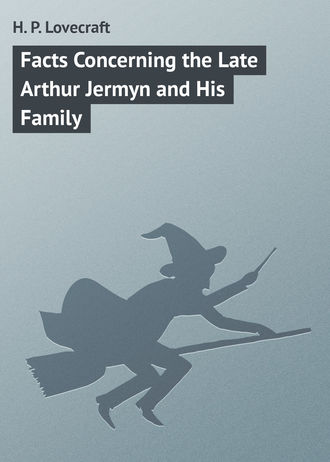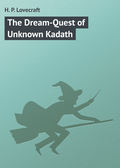
Говард Филлипс Лавкрафт
Facts Concerning the Late Arthur Jermyn and His Family
Wade Jermyn’s son Philip was a highly peculiar person. Despite a strong physical resemblance to his father, his appearance and conduct were in many particulars so coarse that he was universally shunned. Though he did not inherit the madness which was feared by some, he was densely stupid and given to brief periods of uncontrollable violence. In frame he was small, but intensely powerful, and was of incredible agility. Twelve years after succeeding to his title he married the daughter of his gamekeeper, a person said to be of gypsy extraction, but before his son was born joined the navy as a common sailor, completing the general disgust which his habits and misalliance had begun. After the close of the American war he was heard of as sailor on a merchantman in the African trade, having a kind of reputation for feats of strength and climbing, but finally disappearing one night as his ship lay off the Congo coast.
In the son of Sir Philip Jermyn the now accepted family peculiarity took a strange and fatal turn. Tall and fairly handsome, with a sort of weird Eastern grace despite certain slight oddities of proportion, Robert Jermyn began life as a scholar and investigator. It was he who first studied scientifically the vast collection of relics which his mad grandfather had brought from Africa, and who made the family name as celebrated in ethnology as in exploration. In 1815 Sir Robert married a daughter of the seventh Viscount Brightholme and was subsequently blessed with three children, the eldest and youngest of whom were never publicly seen on account of deformities in mind and body. Saddened by these family misfortunes, the scientist sought relief in work, and made two long expeditions in the interior of Africa. In 1849 his second son, Nevil, a singularly repellent person who seemed to combine the surliness of Philip Jermyn with the hauteur of the Brightholmes, ran away with a vulgar dancer, but was pardoned upon his return in the following year. He came back to Jermyn House a widower with an infant son, Alfred, who was one day to be the father of Arthur Jermyn.
Friends said that it was this series of griefs which unhinged the mind of Sir Robert Jermyn, yet it was probably merely a bit of African folklore which caused the disaster. The elderly scholar had been collecting legends of the Onga tribes near the field of his grandfather’s and his own explorations, hoping in some way to account for Sir Wade’s wild tales of a lost city peopled by strange hybrid creatures. A certain consistency in the strange papers of his ancestor suggested that the madman’s imagination might have been stimulated by native myths. On October 19, 1852, the explorer Samuel Seaton called at Jermyn House with a manuscript of notes collected among the Ongas, believing that certain legends of a gray city of white apes ruled by a white god might prove valuable to the ethnologist. In his conversation he probably supplied many additional details; the nature of which will never be known, since a hideous series of tragedies suddenly burst into being. When Sir Robert Jermyn emerged from his library he left behind the strangled corpse of the explorer, and before he could be restrained, had put an end to all three of his children; the two who were never seen, and the son who had run away. Nevil Jermyn died in the successful defence of his own two-year-old son, who had apparently been included in the old man’s madly murderous scheme. Sir Robert himself, after repeated attempts at suicide and a stubborn refusal to utter an articulate sound, died of apoplexy in the second year of his confinement.
Sir Alfred Jermyn was a baronet before his fourth birthday, but his tastes never matched his title. At twenty he had joined a band of music-hall performers, and at thirty-six had deserted his wife and child to travel with an itinerant American circus. His end was very revolting. Among the animals in the exhibition with which he travelled was a huge bull gorilla of lighter colour than the average; a surprisingly tractable beast of much popularity with the performers. With this gorilla Alfred Jermyn was singularly fascinated, and on many occasions the two would eye each other for long periods through the intervening bars. Eventually Jermyn asked and obtained permission to train the animal, astonishing audiences and fellow performers alike with his success. One morning in Chicago, as the gorilla and Alfred Jermyn were rehearsing an exceedingly clever boxing match, the former delivered a blow of more than the usual force, hurting both the body and the dignity of the amateur trainer. Of what followed, members of “The Greatest Show On Earth” do not like to speak. They did not expect to hear Sir Alfred Jermyn emit a shrill, inhuman scream, or to see him seize his clumsy antagonist with both hands, dash it to the floor of the cage, and bite fiendishly at its hairy throat. The gorilla was off its guard, but not for long, and before anything could be done by the regular trainer, the body which had belonged to a baronet was past recognition.





